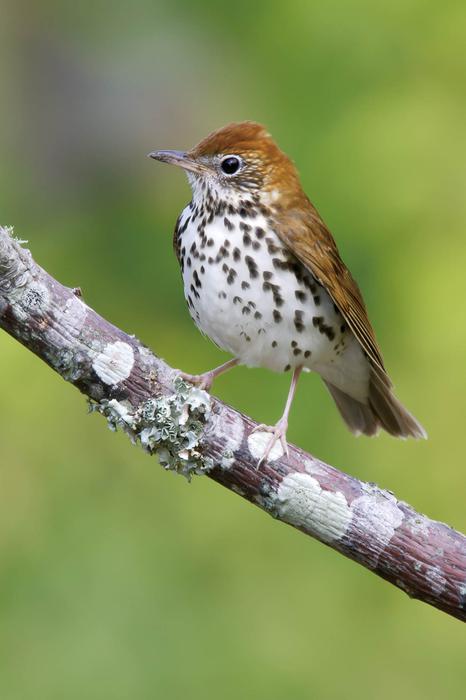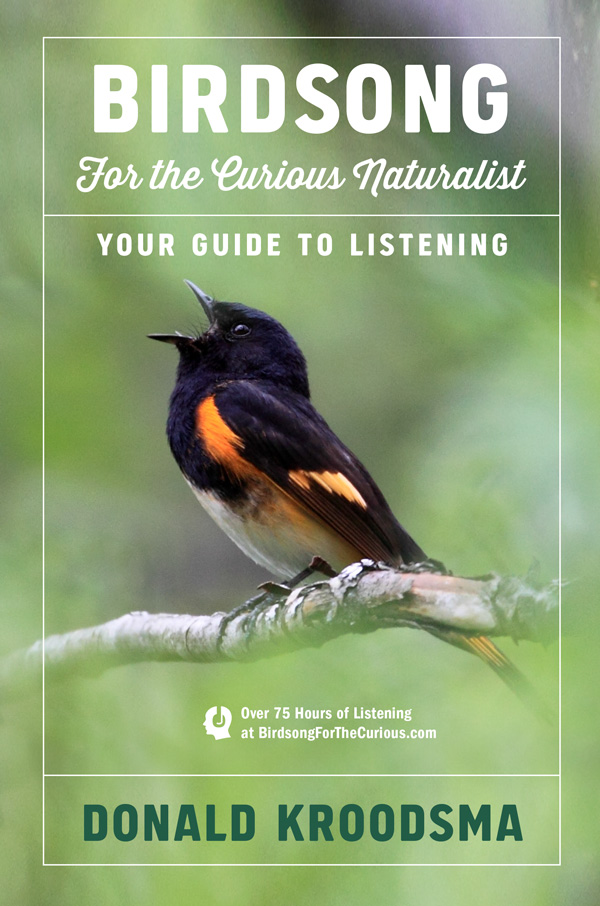Wood thrush
Chapter 6: Song Learning Often Creates Complex Songs and Large Repertoires
Subchapter: How a repertoire is delivered
From page 102 in the book.

Photo by Brian E. Small
♫439. Typical singing. Each song consists of soft, introductory bup bup notes, followed by a prelude of fast-paced, pure tones, and then a somewhat percussive terminal trill (the flourish). May 10, 2007. Quabbin Park, Ware, Massachusetts. (3:19)
♫440. Additional typical singing by the same male. May 10, 2007. Quabbin Park, Ware, Massachusetts. (6:44)
♫441. This male sings seven different preludes, played here at normal, half, and quarter speed. (0:50)
♫442. He sings 11 different flourishes, played here at normal, half, quarter, and one-eighth speed. (2:30)
♫443. Successive songs always have different preludes and flourishes, and the magic in the wood thrush's singing is lost when a particular prelude-flourish combination is repeated several (here 10) times in succession. Here are three different songs, each repeated 10 times, for a total of 30 songs. No wood thrush would ever sing like this, of course; I concocted this recording by rearranging and repeating songs in my editing software. (1:48)
♫444. The thrush's magic is also lost when the same prelude but different flourishes occur in two or three successive songs. Here, listen for the repeating preludes with two to three different flourishes; these songs are naturally occurring combinations in this wood thrush's performance, but he never offers them back-to-back like this (again, this recording is my concoction). (0:35)
